Makeup has been around since the dawn of recorded history—and surprisingly, not that much has changed. Dark eyeliner and red lipstick have been around for thousands of years! Take a trip through the beauty trends of Ancient Egypt and China, stroll through the courts of Queen Elizabeth I and Louis XIV, and find out why wearing lipstick was considered a woman’s patriotic duty in World War II.
Ancient Egypt Eyeliner
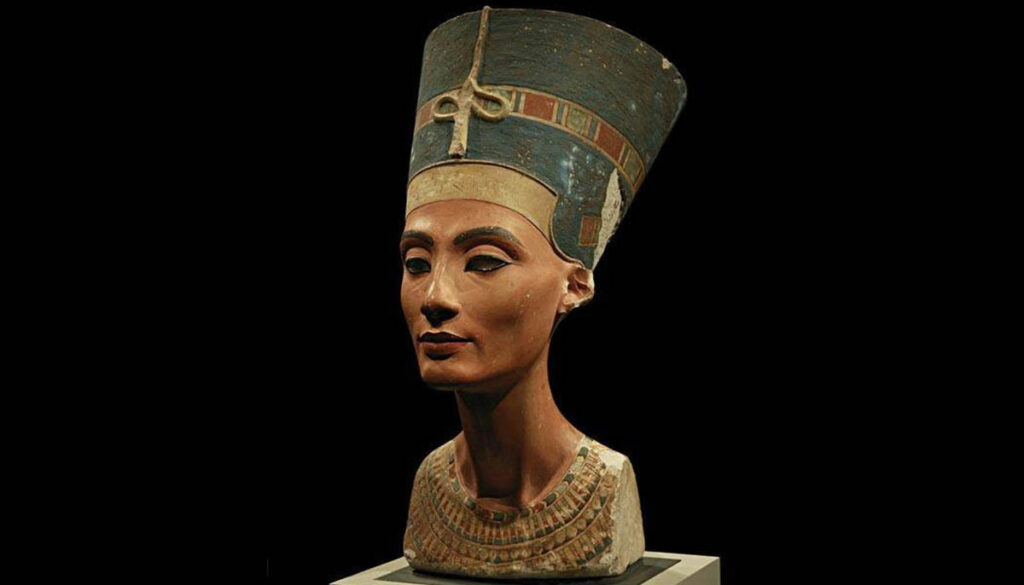
The Ancient Egyptians were huge into makeup. They even developed sugar waxing—mixing honey and sugar to remove unwanted hair—four thousand years ago. Eyeshadow and lipstick were commonly applied, but the main event was the heavy black eyeliner known as kohl.
Both men and women wore cosmetics, but as was true throughout much of history, wealthy women had the most elaborate skincare and makeup routines. To prep their skin, Egyptians would exfoliate with sea salt and bathe in milk—or at least apply a milk-and-honey face mask. Sounds familiar, right? Because the elaborate makeup pots, oil vessels, and other beauty tools were often buried with these wealthy women, we have a good idea of what they used.
Green eyeshadow was made by combining powdered malachite with fat and then spreading the paste onto the wearer’s eyelids. Blue was typically made from lapis lazuli or turquoise. As for lipstick, it’s rumored that Cleopatra used crushed beetles mixed with oil. If that sounds disgusting, then be warned that carmine is still commonly used in cosmetics today.
Kohl was typically made using powdered galena, a natural mineral form of lead sulfide. Yeah, they painted their eyes with lead. And no, that wouldn’t be the last time that we thought it was a good idea to use lead in cosmetics.
Toxic Lead Foundation
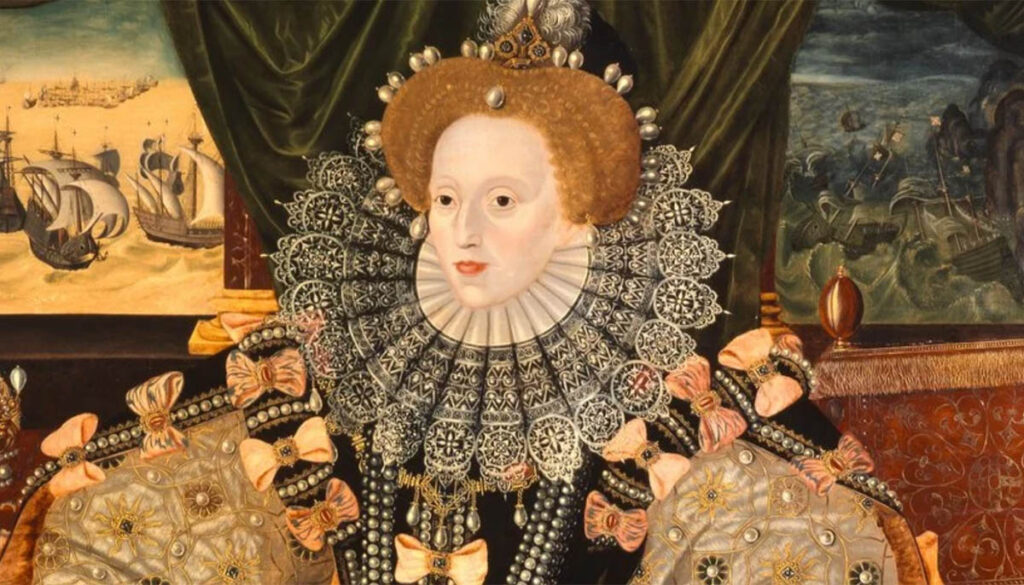
We’ve all seen pictures or movies depicting Queen Elizabeth I with stark white makeup. Elizabeth contracted smallpox, which left her face scarred. It was very important to her to keep up appearances, and she allegedly resorted to using “venetian ceruse,” a cosmetic made from vinegar, water, and… lead. Historians are divided about whether Elizabeth herself actually used this cosmetic, but there’s evidence that women around the world used similar preparations throughout history.
The goal was to achieve the whitest, smoothest complexion possible. Ironically, venetian ceruse would make your skin look even worse once you removed it, mostly because you were smearing yourself with toxic lead. When you wanted to remove your makeup, you’d use a cleanser made with mercury, which is also super, super toxic. And if you really wanted to fit in with the most popular ladies at Elizabeth’s court, you’d have to pluck out your eyebrows and raise your hairline a few inches. Or just shave your head and wear a wig—honestly, the lead poisoning would probably start making your hair fall out anyway.
Nail Polish Is Much Older Than You Think

About five thousand years ago, Chinese nobles used a mixture of beeswax, egg whites, and pigments to color their nails. And you didn’t get to pick just any color—on possible pain of death. If the ruling dynasty decided that only they could wear red nails, then you’d better not attempt to copy them. The pigments could be made from powdered minerals, precious metals, plants, and—yes—insects. Wearing brass nail guards studded with gemstones was common among the wealthiest women to prove that they did not have to do manual labor.
In ancient Egypt and India, wealthy people applied henna to their nails or entire fingertips. And in Babylonia, warriors would paint their nails bright red or black before entering battle. The black paint was achieved by using kohl, the same lead-based paint used by the Egyptians as eyeliner.
While it would be a long, long time before Revlon developed the first modern tinted nail polish in 1932, the wealthy of every era still took care of their nails. Even the Victorians, who frowned upon using obvious cosmetics, took care of their nails by shaping and buffing them, often using scented oil to achieve a high sheen.
The Secret Code of Patches
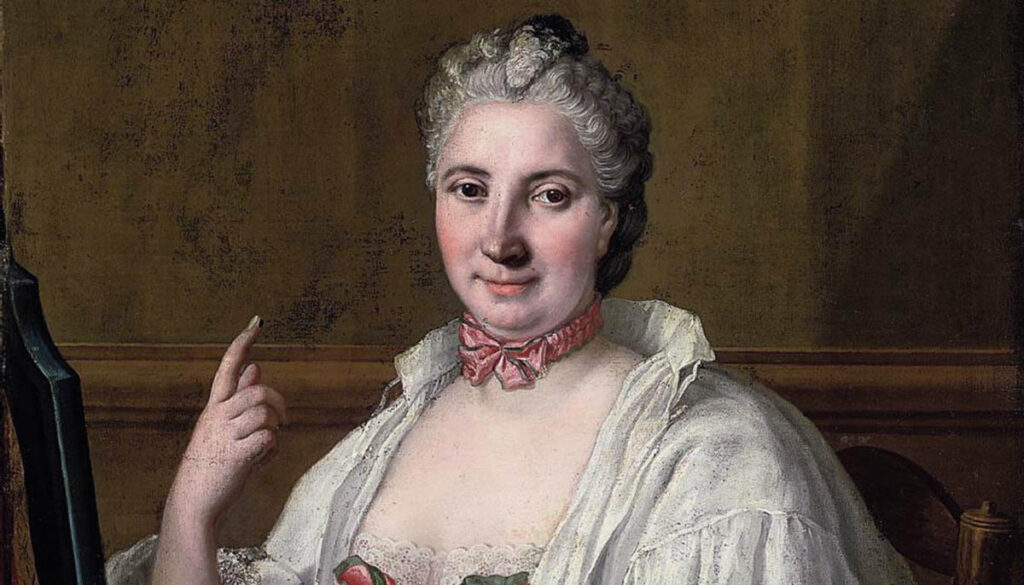
If you picture a “beauty mark,” you probably imagine Cindy Crawford or Madonna during her “Vogue” era—a discreet little mark to add a little character to a beautiful set of features.
But throughout the seventeenth and eighteenth centuries, the French nobility went wild for gluing little black patches to their faces. And as the trendsetters of Europe, everyone else eventually followed. These patches were made from black silk and could be stuck on using resin or spit. While many of them were plain circles, it wasn’t unusual to see diamonds, hearts, and crescent moons.
The style at the time was to wear heavy white powder and bold rouge, so those black patches really stood out. Sometimes, they were used to hide scars—especially from smallpox or syphilis. Wearing too many patches was a low-class thing to do yet wearing none was almost as bad. The key was apparently to wear the exact right number for the current fashion in the right places to call attention to your eyes or lips.
It’s worth noting that both men and women wore this style of makeup—and not just in Europe, either. It wasn’t uncommon for men and women of the upper classes in America to mimic the court fashions of France and England before the Revolutionary War.
‘Natural’ Makeup
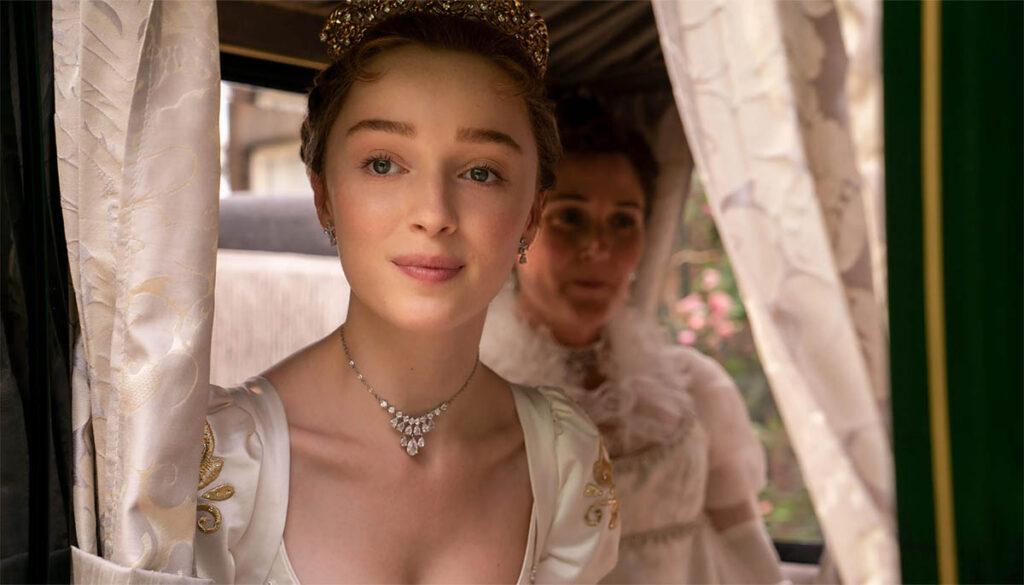
As morality shifted away from the “anything goes” era of the previous century, makeup was frowned upon in the 1800s. Only certain types of women would wear makeup, and they weren’t exactly being invited to polite tea parties, if you catch my drift. (I’m talking about actresses and prostitutes, and no, there’s wasn’t much of a difference in public opinion.)
But virtuous young ladies still wanted to look their best. In that era, the standard of beauty involved a pale face, pink lips, and shiny eyes. Freckles, in particular, were considered the bane of a pretty young woman’s existence. Instead of wearing manufactured cosmetics, they had to get creative.
Wealthy women, along with their ladies’ maids, developed tricks for using natural ingredients like roses, berries, milk, lemon juice, and even ashes from the fireplace. These ingredients were frequently mixed with binders like beeswax or honey, proving that everything comes full circle. Their recipes weren’t that different from those of Egypt or China—or from natural DIY skincare today. Often, these recipes were a closely guarded secret by the maids who prepared them. However, sometimes women’s magazines would print recipes as well.
Related: Bridgerton: How to Wear Regency Inspired Fashion Looks
Makeup Gets Democratic
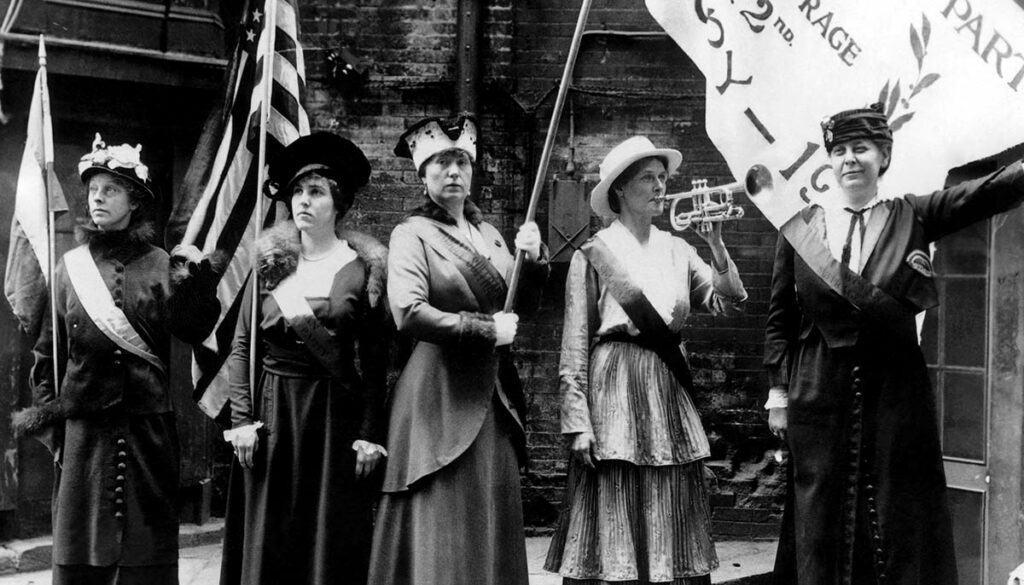
By the end of the nineteenth century, things were changing. Specifically, a growing class of young women was earning wages by working in factories, shops, and offices. They didn’t have the same social hang-ups as the last generation, and many of them had money to spare on a little luxury.
A few familiar names in the cosmetics industry popped up during this time. In 1886, Avon founder David H. McConnell hired a sales force of young women to promote his perfumes. In 1908, a 24-year-old Florence Nightingale Graham would arrive in New York and get a job as a beautician’s assistant. Two years later, she opened her own salon on Fifth Avenue called Elizabeth Arden. Graham would later change her name to match the salon, and she worked tirelessly to shift the public perception of makeup.
American suffragettes–women fighting for the right to vote–often wore red lipstick as a sign of power and defiance. Modern tube-style lipstick was first introduced by Guerlain in 1884; before that, lipstick had come in small pots that needed a brush applicator. That must have made it much easier for suffragettes to touch up their lipstick while marching for women’s rights.
Everybody Wants to Be a Movie Star
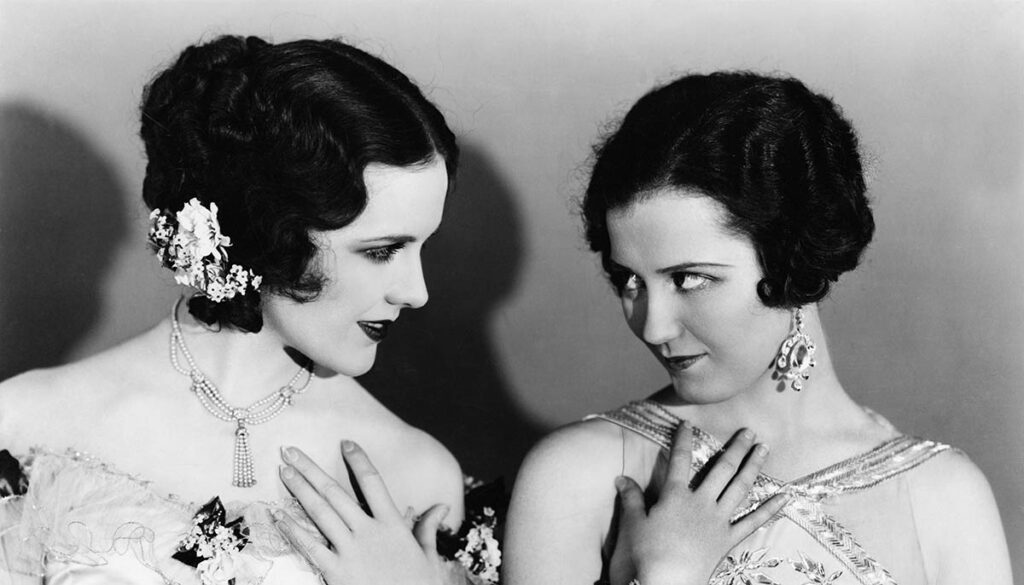
Throughout the 20s, Hollywood stars did more to promote makeup than any brand could ever hope. While the most conservative ladies still shunned the bright red lipsticks and heavy eyeliners of the flapper era, young women happily spent their pocket money on cosmetics.
One of the biggest names in makeup at the time was Max Factor. Yes, he was a real person! Factor was an Oscar-winning Hollywood makeup artist who developed a line of cosmetics for ordinary women to recreate the glamour of the silver screen at home. Factor actually coined the term “make-up,” and his influence on the entire industry can’t be overstated.
Pencil-thin eyebrows, smoky lashes, and dark pouting lips would stay popular until the bolder brow of the 1940s came into fashion. However, red lipstick has never totally gone out of fashion.
The Lipstick War
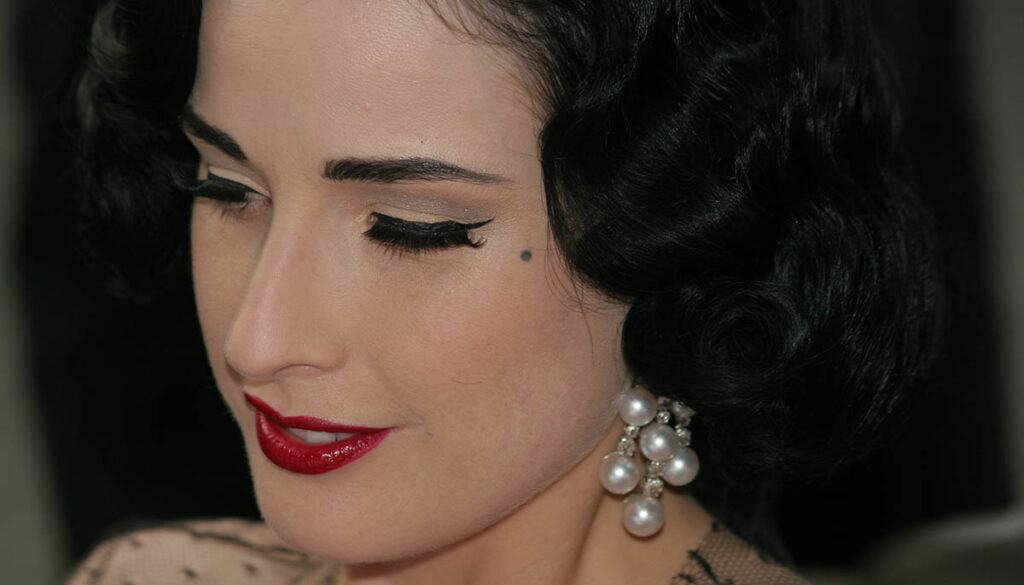
During World War II, when many women entered the workforce in traditionally masculine jobs such as manufacturing, makeup became more important than ever before. It was seen as such an important part of wartime morale that rationing restrictions were lifted on cosmetics. Nothing was more patriotic than a bold red lip.
According to historian Rachel Felder, Hitler hated red lipstick, so wearing it became a point of pride and defiance by the Allied nations. Women who joined the military were required to wear “Montezuma Red,” a color created by Elizabeth Arden on behalf of the government. Later, Arden would also create “Victory Red.” You can buy a replica of that color from vintage-retro cosmetics company Bésame. Burlesque icon Dita Von Teese, pictured above, almost always sports blood-red lipstick similar to the style worn in the 1940s.













